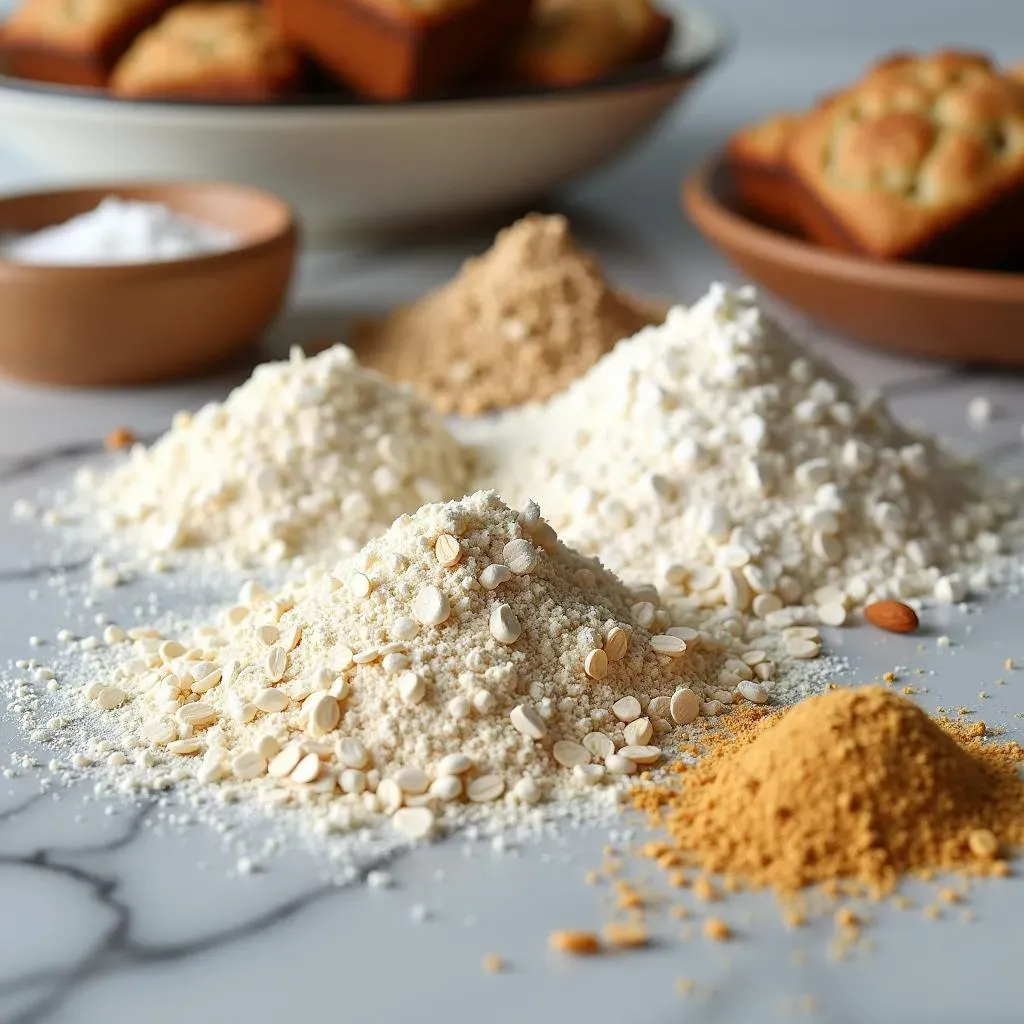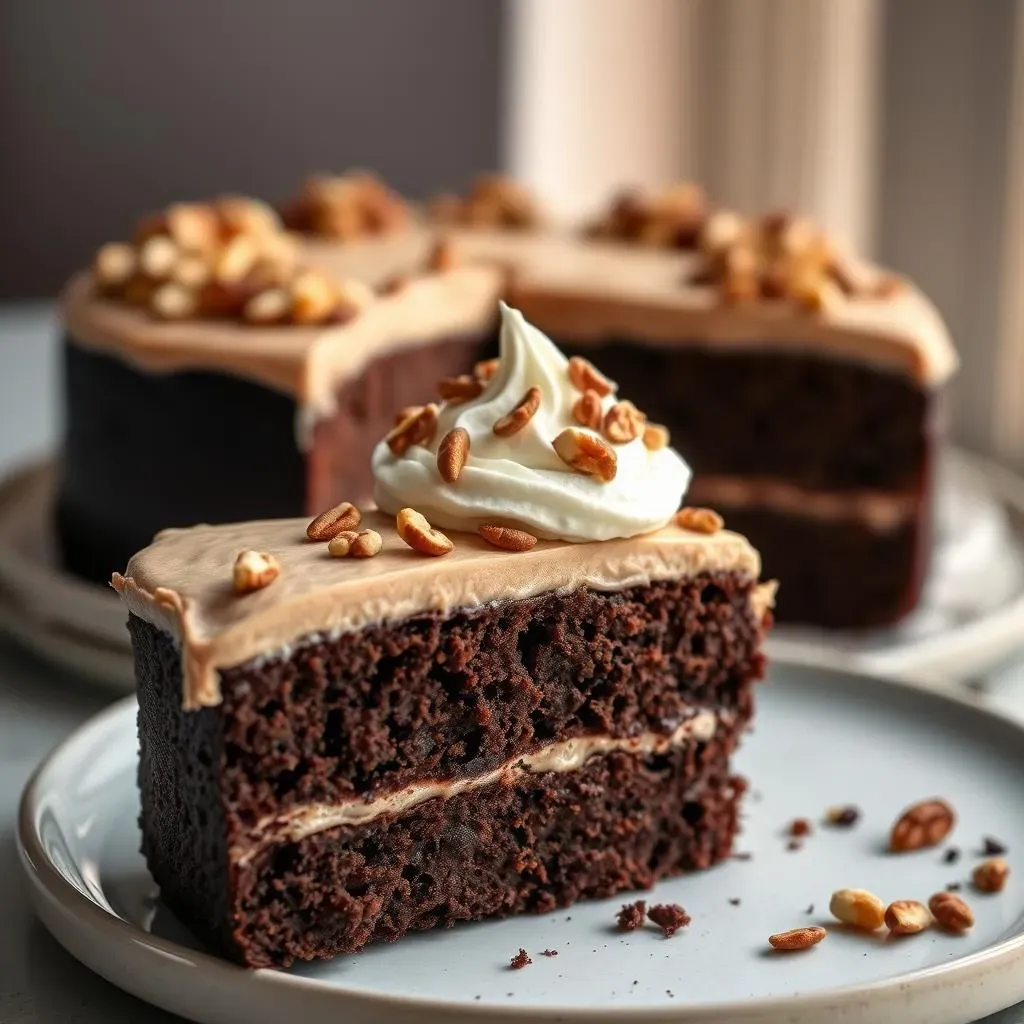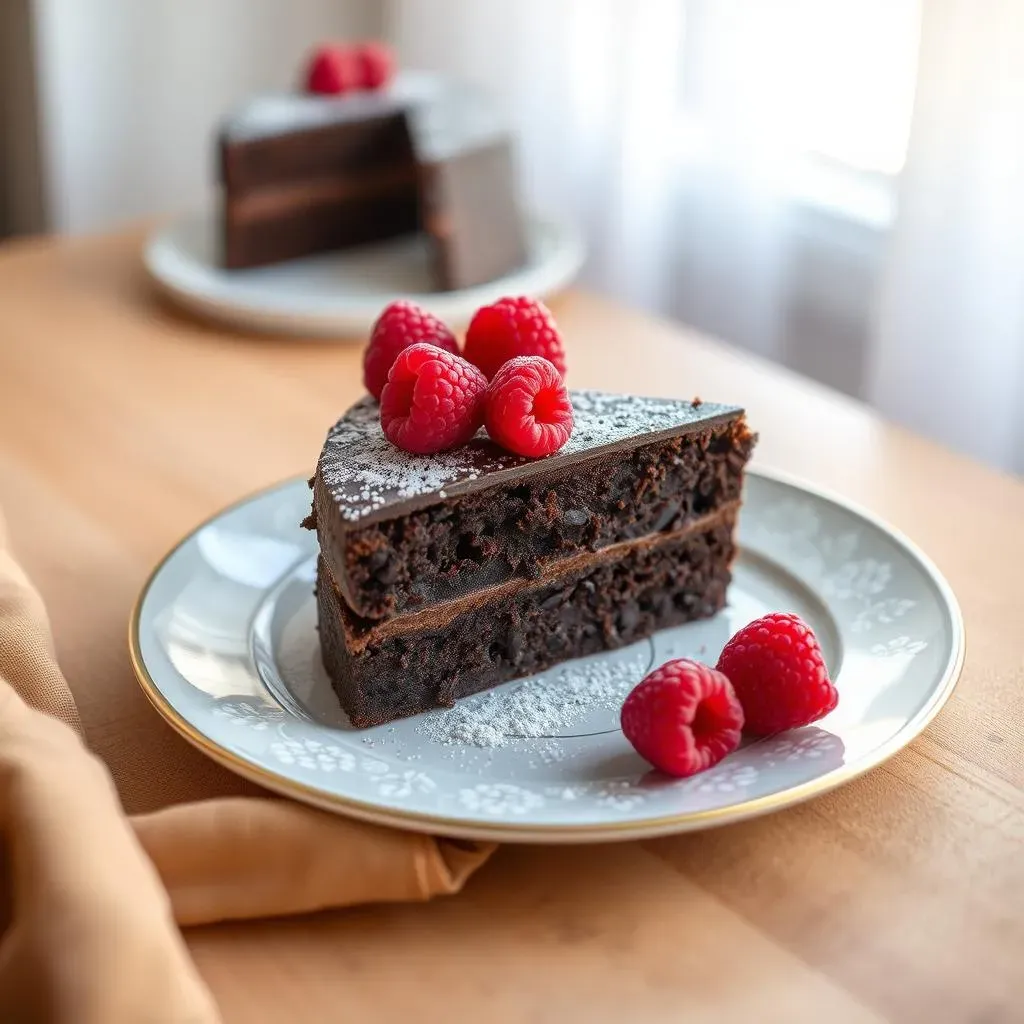Table of Contents
Are you on a ketogenic diet but still dreaming of indulging in a slice of delicious cake? Don't despair! This comprehensive guide will teach you exactly how to make keto cakes that are both incredibly tasty and perfectly aligned with your low-carb lifestyle. We'll explore the science behind keto baking, demystifying the challenges of creating moist, fluffy cakes without traditional flour and sugar. Forget dry, crumbly disappointments – we're unlocking the secrets to achieving truly delightful keto desserts. This article will walk you through everything you need to know, from choosing the right keto-friendly ingredients like almond flour and sweeteners to mastering baking techniques that ensure your cakes are light, airy, and bursting with flavor. We'll cover a variety of popular keto cake recipes, from classic chocolate to creative carrot cake adaptations, providing detailed instructions and helpful tips for each. We’ll also delve into troubleshooting common keto baking issues and show you how to customize recipes to create your own unique keto cake masterpieces. Ready to transform your keto journey with incredibly satisfying desserts? Let's learn how to make keto cakes together!
Understanding Keto Baking: Flour Power and Sweeteners
Understanding Keto Baking: Flour Power and Sweeteners
Flour Power: The Keto-Friendly Alternatives
So, you're diving into the world of keto baking, huh? The first hurdle is often the flour. Forget all-purpose; we're talking keto-friendly options. Almond flour is your new best friend – it's relatively low in carbs and adds a lovely nutty flavor. Coconut flour is another contender, but it absorbs liquid like a sponge, so you'll need to adjust recipes accordingly. Think of it as a super absorbent superhero. Other options include oat flour (make sure it's certified gluten-free and low-carb!), and even flaxseed meal can add some texture and binding properties. Experiment and see which one you like best; each gives a slightly different texture and taste.
Remember, the type of flour you choose significantly impacts the final texture of your keto cake. Almond flour tends to produce a lighter, more delicate crumb, while coconut flour can result in a denser, chewier cake. Don't be afraid to experiment with blends; a mix of almond and coconut flour can sometimes yield the perfect balance.
Flour Type | Carb Content (per cup) (approx.) | Texture |
|---|---|---|
Almond Flour | 6-8g | Light, delicate |
Coconut Flour | 50g+ | Dense, chewy |
Oat Flour (GF, Low-Carb) | Varies greatly, check label | Similar to all-purpose |
Sweetener Science: Beyond Sugar
Now, let's talk sweetness. Sugar's out, but don't worry, deliciousness isn't! The keto world offers a variety of sugar substitutes, each with its own quirks. Erythritol is a popular choice; it's well-tolerated by most people and has a mild sweetness, but it can have a cooling aftertaste. Stevia, another common option, is intensely sweet, so use it sparingly. Monk fruit sweetener is another option, with a cleaner taste than stevia. Then there's allulose, a relatively new kid on the block, which is similar to sugar in taste and texture but has fewer carbs.
Choosing the right sweetener is crucial for both the taste and texture of your keto cake. Some sweeteners might affect the moisture level or browning of your cake. Experiment to find your favorite; it's all part of the fun! Remember to always check the nutrition labels – carb counts can vary widely between brands and types of sweeteners. The perfect keto cake is a delicious experiment!
- Erythritol: Mild sweetness, cooling aftertaste
- Stevia: Intensely sweet, use sparingly
- Monk Fruit: Clean taste, good for baking
- Allulose: Similar to sugar in texture and taste
Mastering Keto Cake Recipes: From Chocolate to Carrot
Mastering Keto Cake Recipes: From Chocolate to Carrot
Classic Keto Chocolate Cake: Decadence Reimagined
Let's start with the quintessential keto cake: chocolate! The rich, intense flavor of chocolate pairs beautifully with almond flour's subtle nuttiness. A good keto chocolate cake recipe will usually involve melting dark chocolate with butter or coconut oil, then whisking in eggs and your chosen sweetener. Almond flour provides the structure, while cocoa powder delivers that deep chocolatey goodness. Don't be afraid to experiment with different types of chocolate – dark chocolate generally works best, but you can also use semi-sweet or even milk chocolate (just keep an eye on the sugar content!). Remember, a touch of vanilla extract can elevate the flavor profile to a whole new level.
A common mistake is over-mixing the batter. Over-mixing develops the gluten (even in gluten-free flours), leading to a tough cake. Gentle folding is key here. Also, make sure your oven temperature is accurate—baking at too high a temperature can lead to a dry cake, while baking at too low a temperature can result in a gummy one. Always use a toothpick to check for doneness – if it comes out clean, your cake is ready!
Ingredient | Function | Keto-Friendly Alternatives |
|---|---|---|
Butter | Moisture, richness | Coconut oil |
Eggs | Binding, structure | Flax eggs (flaxseed meal + water) |
Cocoa Powder | Chocolate flavor | Unsweetened baking chocolate |
Keto Carrot Cake: A Surprisingly Delicious Twist
Now, for something a little different: keto carrot cake! This might sound crazy, but trust me, it works. The sweetness of the carrots combines surprisingly well with the spices and the almond flour base. You'll need to adjust the recipe to reduce the sugar content, but you can still achieve a moist and flavorful cake. Consider adding chopped pecans or walnuts for extra texture and flavor. The spices – cinnamon, nutmeg, ginger – add warmth and complexity that complements the carrots perfectly. It's a true testament to the versatility of keto baking.
Many keto carrot cake recipes use cream cheese frosting, which adds a tangy contrast to the sweetness of the cake. However, you can also explore other frosting options, such as a whipped coconut cream frosting or a simple glaze made with erythritol and a little almond milk. The possibilities are endless! Remember to shred your carrots finely, as large chunks can lead to an uneven texture. Also, don't overbake – a slightly underbaked cake will be more moist.
- Use finely shredded carrots
- Don't overbake the cake
- Experiment with different spices
- Consider adding nuts for texture
Essential Tips for Perfect Keto Cakes: Baking Secrets Revealed
Essential Tips for Perfect Keto Cakes: Baking Secrets Revealed
Room Temperature is Key
Ever wondered why recipes always emphasize room-temperature ingredients? It's not just a suggestion; it's crucial for keto baking, especially when dealing with fats like butter or coconut oil. Room-temperature butter creames beautifully with sweeteners, creating a light and airy batter. Cold butter, on the other hand, will incorporate poorly, resulting in a dense and possibly crumbly cake. Similarly, room-temperature eggs emulsify better with the fats, contributing to a smoother texture. So, take the extra few minutes to bring your ingredients to room temperature – your cake will thank you!
The same principle applies to your baking pan. A cold pan will shock the batter, leading to uneven baking and potential cracking. A preheated pan ensures even heat distribution and a smoother rise. Line your pan with parchment paper to prevent sticking and make for easier removal. This little extra step can make a big difference in the overall look and feel of your finished cake.
Ingredient | Room Temperature Benefit |
|---|---|
Butter | Creams better with sweeteners, lighter batter |
Eggs | Better emulsification with fats, smoother texture |
Baking Pan | Even heat distribution, smoother rise |
Don't Overmix the Batter
Overmixing is a common mistake, even for experienced bakers. With keto baking, it’s especially important to avoid overmixing because many keto flours (like almond and coconut flour) don't contain gluten, but overmixing can still lead to a tough, rubbery texture. The goal is to combine the ingredients just until they're moistened. Once all the dry ingredients are incorporated, stop mixing! Overmixing develops the gluten-like proteins, leading to a dense cake. You want a light and fluffy texture, so embrace the gentle hand here.
Instead of vigorously mixing, gently fold the dry ingredients into the wet ingredients using a spatula. This ensures that the batter remains light and airy. Think of it as a delicate dance between the wet and dry ingredients. Overmixing is the enemy of a perfectly moist keto cake. A good rule of thumb is to stop mixing as soon as the ingredients are just combined. You'll see the difference in the final product!
- Mix until just combined
- Use a spatula to gently fold ingredients
- Avoid overmixing at all costs
Baking Time and Doneness
Baking times can vary depending on your oven, the type of flour used, and the size of your cake pan. Don't rely solely on the recipe's suggested baking time. Instead, use the toothpick test: insert a toothpick into the center of the cake. If it comes out clean (or with just a few moist crumbs), your cake is done. If it's still wet, bake for a few more minutes and check again. It’s better to slightly underbake a keto cake, as overbaking can lead to dryness.
Overbaking is a common problem that leads to dry, crumbly keto cakes. Remember that keto flours absorb moisture differently than all-purpose flour. Start checking for doneness a few minutes before the recipe suggests. It's always better to err on the side of caution and slightly underbake. A slightly underbaked cake can always be finished with a few extra minutes in the oven, but an overbaked cake is hard to recover. Trust the toothpick test!
How to Make Keto Cakes: Troubleshooting and Variations
How to Make Keto Cakes: Troubleshooting and Variations
Troubleshooting Common Keto Baking Issues
So, your keto cake didn't quite turn out as expected? Don't panic! Keto baking has its own set of challenges. A common problem is a dry, crumbly cake. This often happens because keto flours absorb moisture differently than traditional flour. Make sure you're using the right amount of liquid in your recipe, and consider adding a tablespoon or two of extra liquid (like almond milk or melted coconut oil) if the batter seems too dry. Another culprit could be overbaking; always check for doneness with a toothpick before taking the cake out of the oven. Slightly underbaking is better than overbaking – a slightly underbaked cake is easier to rescue than an overbaked one.
Sometimes, your keto cake might be too dense or gummy. This could be due to overmixing, using too much coconut flour (it's very absorbent!), or not using enough leavening agent (baking powder or baking soda). Remember, gentle folding is key when combining ingredients. Also, make sure your baking powder or soda is fresh; old leavening agents lose their potency, impacting the rise of your cake. Experiment with different ratios of flours to find the perfect balance for your recipe and your preferred texture.
Problem | Possible Cause | Solution |
|---|---|---|
Dry, crumbly cake | Not enough liquid, overbaking | Add extra liquid, check for doneness early |
Dense, gummy cake | Overmixing, too much coconut flour, old leavening | Mix gently, adjust flour ratios, use fresh leavening |
Adapting Keto Cake Recipes: Flavor Adventures
Once you've mastered the basics, the fun really begins! Keto cake recipes are incredibly versatile. Don't be afraid to experiment with different flavors and additions. Want a hint of citrus? Add some lemon or orange zest to your cake batter. Love spices? Experiment with cinnamon, nutmeg, cardamom, or even ginger. Feeling adventurous? Incorporate berries (like raspberries or blueberries) or chopped nuts (like pecans or walnuts) for added texture and flavor. The possibilities are truly endless!
Consider adding extracts like vanilla, almond, or even peppermint to enhance the flavor profile of your keto cake. A touch of salt can also balance the sweetness and bring out the other flavors. You can also experiment with different frostings and toppings. Cream cheese frosting is a classic keto option, but you can also try whipped coconut cream, a chocolate ganache, or even a simple powdered erythritol dusting. Remember, the best keto cake is one that satisfies your taste buds and fits your dietary needs. Embrace your inner baker and have fun creating!
- Add citrus zest for a refreshing twist
- Experiment with different spices for warmth and complexity
- Incorporate berries or nuts for added texture
- Try various extracts to enhance the flavor
- Explore different frostings and toppings
Creating Your Own Keto Cake Masterpieces
Finally, don't be afraid to get creative and develop your own keto cake recipes! Start with a basic recipe and then tweak it to your liking. Maybe you want to make a lemon poppy seed keto cake, or perhaps a funfetti keto cake. The key is to understand the principles of keto baking – using the right keto-friendly flours, sweeteners, and baking techniques. Once you grasp these fundamentals, the possibilities are limitless. The more you experiment, the more confident you'll become in your keto baking abilities. Remember, every baking failure is a learning opportunity!
Don't be discouraged if your first few attempts aren't perfect. Keto baking takes practice, and it's all part of the learning process. Keep experimenting with different ingredients and techniques, and you'll eventually find your own signature keto cake recipe. Share your creations with friends and family – they'll be amazed by your culinary skills! The best part of keto baking is the journey of discovery and creation. Enjoy the process, and savor the delicious results. Happy baking!
